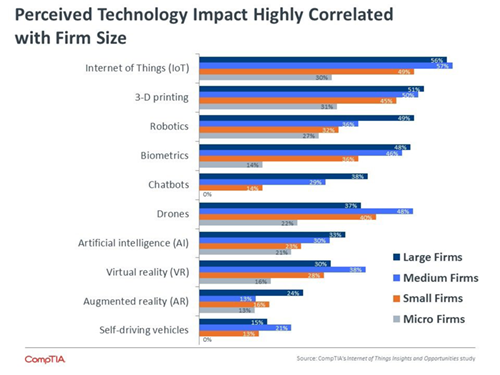
Scanning my in box and Twitter feeds over the last couple of months I can’t help but think that a multitude of companies have simultaneously experienced an epiphany. All of a sudden these firms are making statements such as ‘putting our customers first’ and ‘our users are at the heart of our business’.
This is no co-incidence. At the centre of this outwardly altruistic set of statements is not just an obvious marketing message – so where were customers on your priority list before you saw the light then? Rather it is in my opinion heralding the wider arrival of the overarching message that underpins the massive investments that enterprises are undertaking in what we are rapidly coming to understand as being a ‘digital transformation’, or DX for short.
That message is pretty much, ‘We’re focussing our attention on the customer’, but often more specifically, on the end user.
Let me say from the outset that I am a big fan and proponent of undertaking a DX - after all whilst we have been in the internet age now for 25 years most of us have failed to join up all the technology readily available to us and use it effectively to gain a complete picture of our customers. As a result many of are using old school techniques when it comes to keeping those customers and finding new ones.
 If you still have a team of telesales people cold calling a list for sales appointments then you know who you are.
If you still have a team of telesales people cold calling a list for sales appointments then you know who you are.
Likewise, if you work in product development but never talk to or collaborate with sales and service teams it’s highly likely you will launch new products that will fail because no-one wants them. Consequently, you will then rant at the marketing team to spend a fortune on ‘awareness’ programs to create demand and build sales.
Working in silos and keeping everything to yourself is no longer tenable; you have to collaborate and share and the most important information you must share is what your customers think of your products and your services. Hence, customers are at suddenly at the heart of business.
The process of a DX is however, or certainly can be, complex and can encompass a wide range of applications sitting on a flexible network where social networking apps will be a key component in finding out what your customers think.
Above all else a DX will almost certainly be expensive but not however as expensive as losing your customer base to a competitor that transformed their business better or faster.
For resellers this is a huge opportunity and throughout 2017 Comms Business Magazine will be focussing on the issues and reporting on key player initiatives.
Awesome!
I recently came across an interesting chart from CompTIA (see the graphic) on Twitter that correlated the impact of newer technology with the size of firms. David Dungay and I have spent some time recently looking at the likely impact of technologies and in particular that which virtual reality (VR) may have on the business market. We concluded that many applications were already emerging that could lead to channel monetisation in 2017.
I met last month with Nathan Marke, Chief Digital Office at Daisy, who is a big fan of VR as well as DX. He told me about the demonstration he had from Microsoft on their Hololens VR product.
Marke says that Microsoft’s voyage into VR has taken a different turn from the more gaming oriented origins of Facebook’s Oculus Rift.
“Calling their take ‘Mixed Reality’, Microsoft has launched v1 of its Hololens product into the developer community, complete with SDK. Hololens is a pair of glasses jam packed with sensors. You fix it into the space in which you are wearing it and it then projects, or mixes, holograms onto your normal view of the world – hence Mixed Reality. Less disorientating than the completely immersive experience of VRs like Oculus Rift, it is a very impressive experience where the holograms really do seem to just hover there, with perfect sensitivity to your movements in 3D space.
Hand gestures in front of the lens replace mouse clicks. It creates options for a whole different range of applications. Early release projects include applications as diverse as anatomy classes for medical students and car design studios. Developing this into real-time Holographic VC, whilst having big hurdles to jump through, could be properly awesome.”
I checked out the Microsoft web site for the product (www.microsoft.com/microsoft-hololens/en-us) and I recommend this to any reader who is sceptical about business applications and ask you to look at the kitchen purchase application video there and then try and tell me VR is only for gamers.
